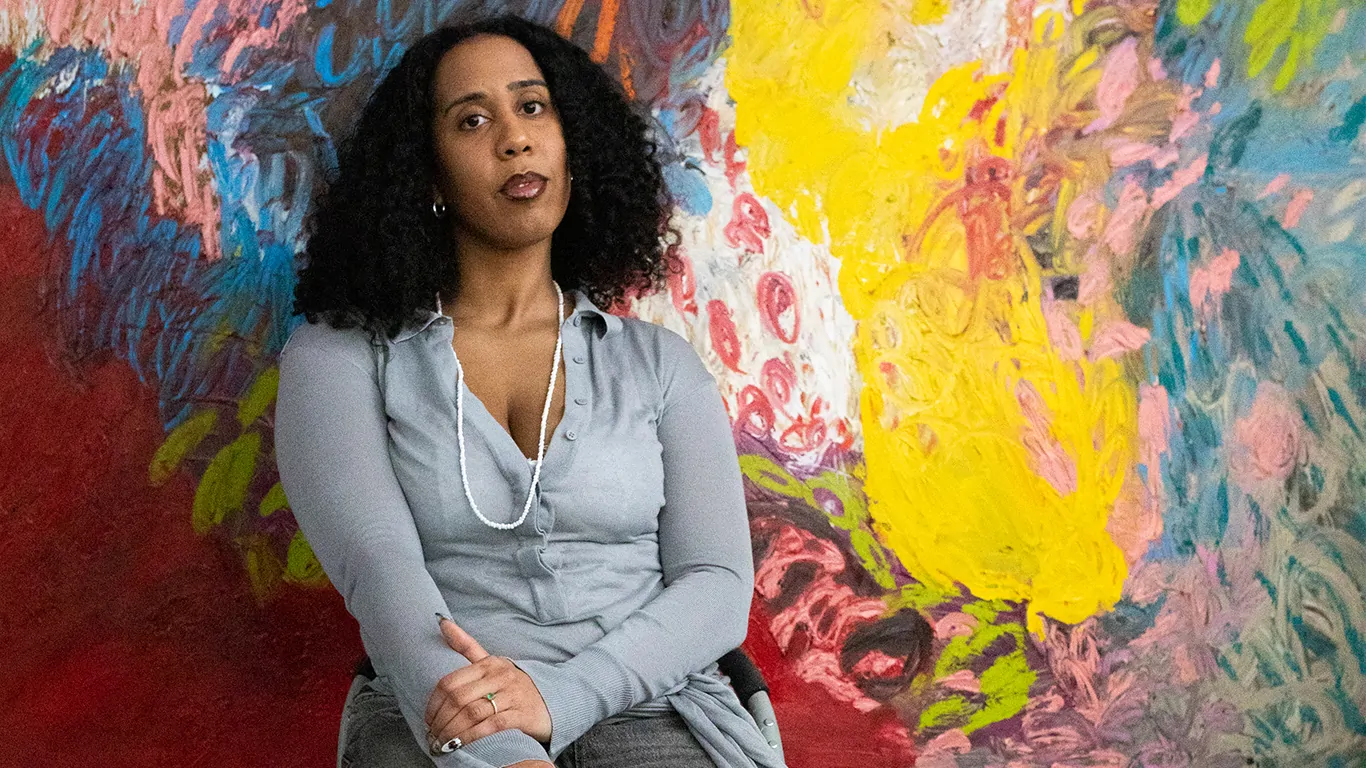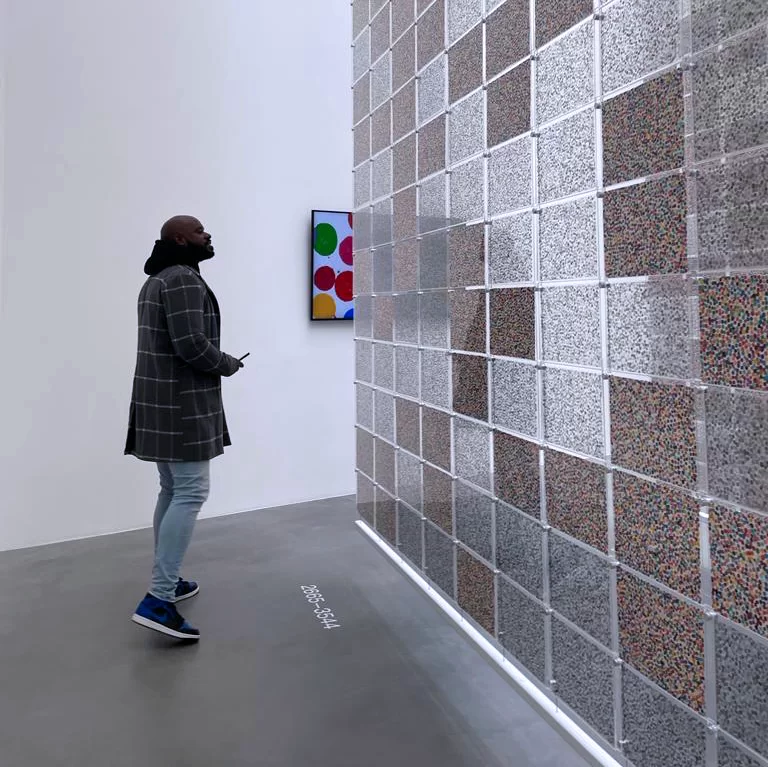Through abstraction and ancestral symbolism, Eilen Itzel Mena challenges erasure and asserts presence.
You can feel the spirit of the Bronx in Eilen Itzel Mena’s brushstrokes—loose, confident, alive. And if you listen closely, the breeze of the Caribbean whispers through her colours. Mena, an Afro-Dominican American artist, makes work that doesn’t just show up—it takes up space. It says: I’m here. I’ve been here.
Her roots stretch between two places that pulse with cultural memory: the South Bronx and Baní, in the Dominican Republic. That tension—and that richness—runs through her work. There’s texture, yes, and saturated colour, but also a defiant energy. Her art glows against the sterile coolness of white-cube galleries. It doesn’t wait for permission. It just is.
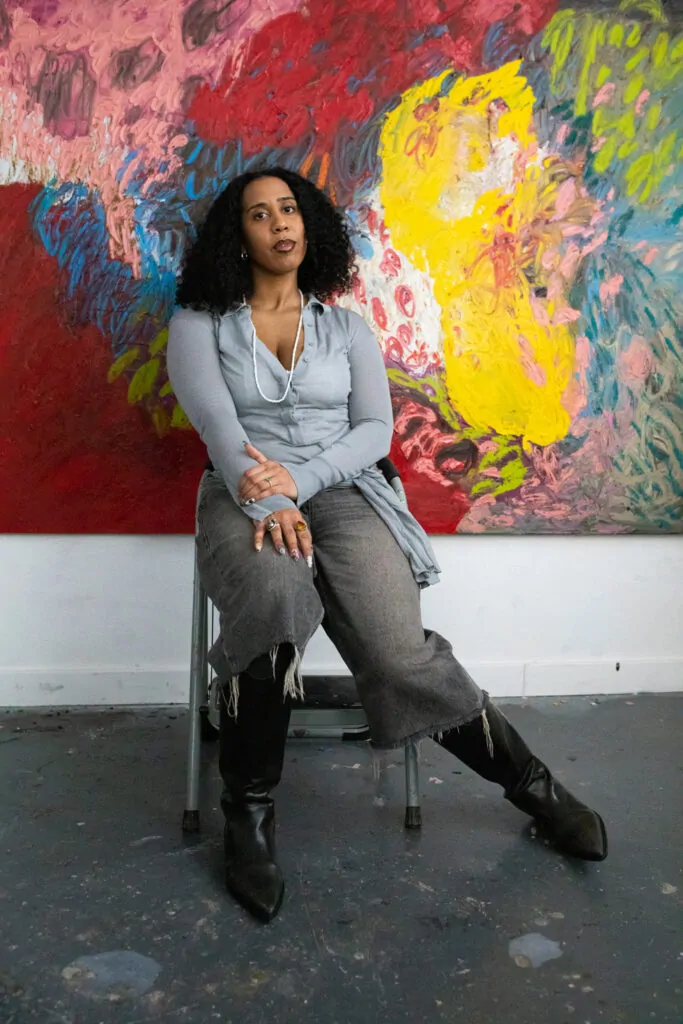
Photo: Brynley Odu Davies.
Courtesy of the artist and Bolanle Contemporary
I AM HERE AND I KNOW YOU SEE ME, BUT IF YOU ACT LIKE YOU DON’T, I’M STILL RADIATING AND DOING MY POWERFUL THING
Eilen Itzel Mena
Though her practice leans towards abstraction, it’s powerfully personal. Spirals suggest coiled hair, but also time looping back on itself. She works with cloth, symbols from Ifá, scraps of memory. The materials speak, even if the meaning isn’t always linear. Mena is mapping her own terrain—Blackness, Latinidad, womanhood—all in one breath.
Her work isn’t about tidy conclusions. It confronts. Through form, through colour, and often, through what it doesn’t explain. Georgia O’Keeffe once said, “I found I could say things with colour and shapes that I couldn’t say any other way—things I had no words for.” Mena seems to live by that too.
Each painting, each performance, each installation is a kind of remembering—a way back to the self. Ritual Dance, one of her signature works, captures it best. It’s bold, full-bodied, full of movement. Like much of her work, it expands beyond the canvas. It doesn’t shrink itself to fit the room.
This March, Mena and Jemila Isa presented In Her Spirit at Sadie Coles HQ, a joint exhibition exploring how Black women inherit, embody and transform spiritual lineages through ritual, gesture, paint and sculpture.
Mena moves fluidly across media—painting, drawing, sculpture, print, performance. But the thread is clear: visibility. She’s pushing against the systems that have rendered so many Black and Brown lives invisible. Her work carries feeling—joy, rage, tenderness—and demands that it be witnessed. Not explained. Just seen.
She’s especially interested in the emotional space between the inner child and the adult self. There’s vulnerability there, but also power. To step into Mena’s world is to feel the layered beauty of diasporic life—its contradictions, its softness, its insistence on being seen.
We spoke with the artist about that sense of movement—between places, languages, selves. About what it means to be visible on your own terms. And about joy—not as escape, but as something you leave behind. A signal to others still finding their way.
You grew up between the South Bronx and the Dominican Republic—two places with very different energies. How have those environments shaped your visual instincts and the way you think about colour and emotion in your work?
Eilen Itzel Mena: Although they are both very different places, I always felt held by my Dominican identity in the Bronx growing up, because NYC is such a microcosm of the Dominican Republic (amongst many other places in the world). As of right now, Dominicans are the largest immigrant group in NYC, and that isn’t including Dominican Americans in that population. Our language (Spanish), food, and music were such a part of my upbringing both in Bani (DR) and in the Bronx.
When we moved to the South Bronx, I was also introduced to so many other members of the African diaspora from Latin America and the Caribbean, along with African.
I enjoyed seeing the ways in which our cultural backgrounds were woven into the energy of NYC. This intermingling of cultures and overlap because of our shared histories felt very layered, joyful, and colourful to me. This understanding is what has led me to make works that are expressive, layered with paint and marks, and lean on the themes of community, spirit, ancestry, and personal identity.
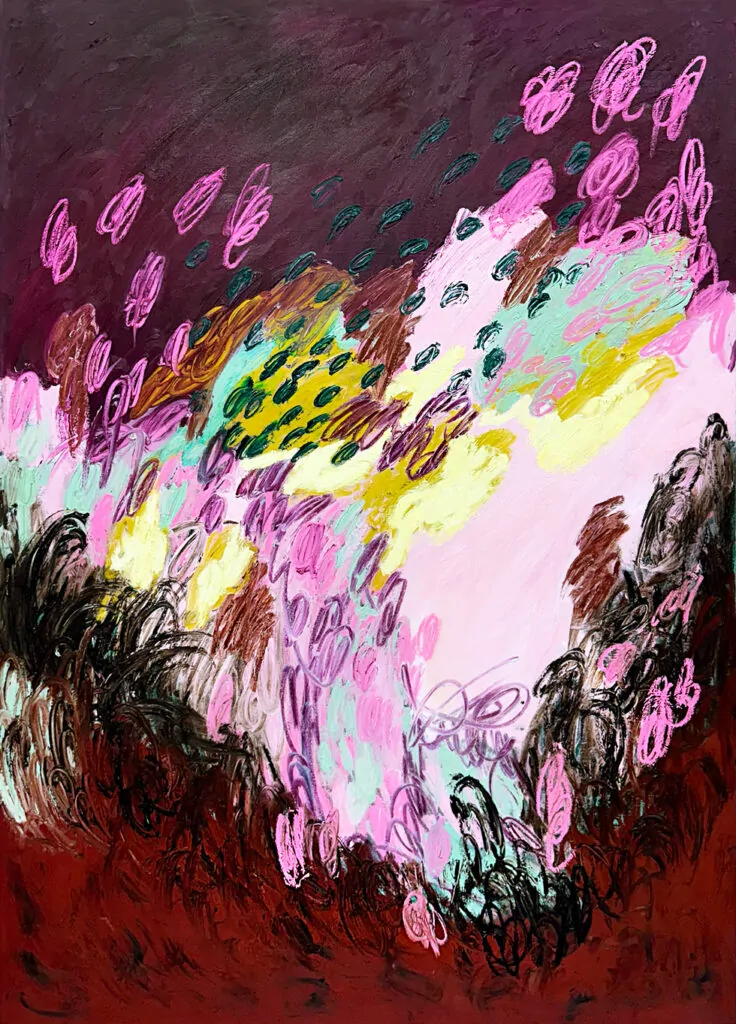
Oil on Canvas
(170cm x 130cm)
Courtesy of the artist and Bolanle Contemporary
Your work is rooted in an intersectional, femme, Afro-Diasporic perspective. Since moving from the US to the UK, have those identities shifted at all in how they show up in your practice? Has London changed your relationship to visibility?
Eilen Itzel Mena: Since moving to the UK, I feel as though those identities have been strengthened, because of London’s Afro-Diasporic makeup. Here, I am also sharing experiences with people from places I grew up with in NYC. However, because England predates the USA and was its original colonial power, the energy of this place has felt different to me—especially given the ways in which Black and Latin American people here express themselves in this environment. Because of this, London has changed my relationship with and understanding of visibility, and has instilled in me a desire to prioritise visibility in my work and the energy it emits.
Since living here, I’ve been thinking a lot about the ways in which Eurocentric societies impose a kind of forced invisibility onto Black and Brown people’s cultural and personal expressions, especially when we are also present in the same space.
Whereas in NYC, we come from a place of loud, expressive folks—no matter the background. It’s a city where everyone has main character energy, and I love it! So now, I aim for my work to carry that “I AM HERE AND I KNOW YOU SEE ME, BUT IF YOU ACT LIKE YOU DON’T, I’M STILL RADIATING AND DOING MY POWERFUL THING” vibe, while also expressing a diasporic and shared history of the people I come from and those with whom I connect.
It reminds me of an Ifá saying I heard years ago: “Honey already knows it’s sweet”—it doesn’t need to be told that.
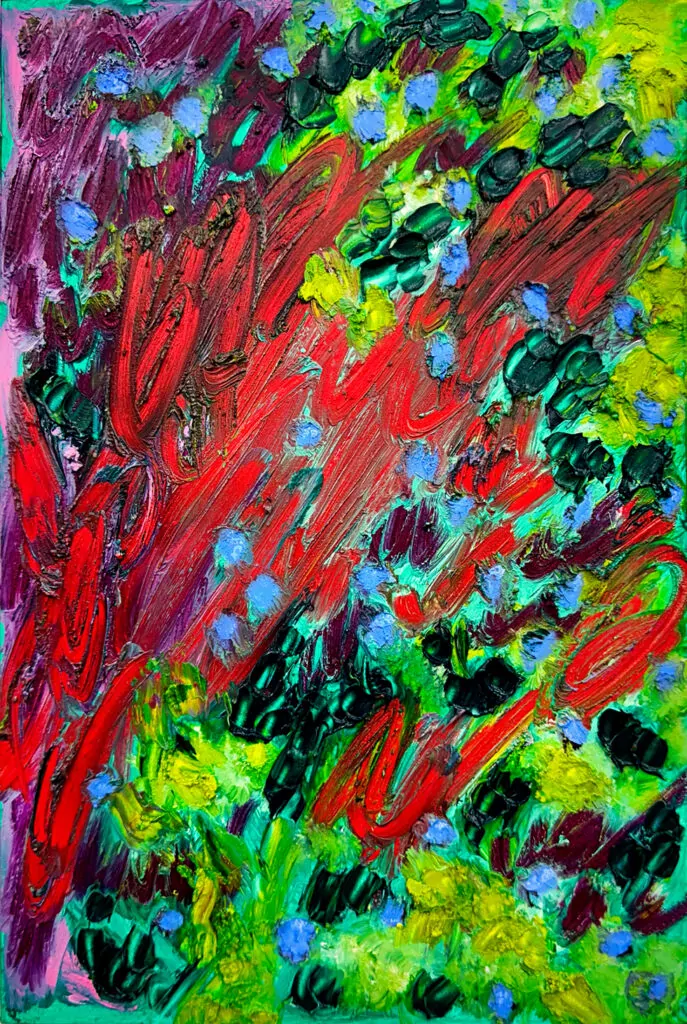
Oil on Canvas
(165cm x 230cm)
Courtesy of the artist and Bolanle Contemporary
Being Afro-Dominican American means moving between different cultural and political spheres. How do you navigate the complexities—and connections—between African American and Latinx communities in your art?
Eilen Itzel Mena: Because my identity and lived experience have taken me to the USA, the Caribbean, South America, and now the UK, I’ve found that this has instilled in me an unwavering pattern of drawing connections. As a result, I can easily hold and understand complexities. I’ve always told myself that being diasporic is a verb — that I need to move through the world in order to embody that in my lifetime, not just to understand where my ancestors came from. This movement is also internal: it involves wielding ancestral knowledge that helps me interact with others — whether from similar or different backgrounds — as well as knowledge that allows me to know myself more deeply.
As an Afro-Latina who is also American and grew up with African Americans in the USA, I have a deep love and understanding of the cultural, political, and interpersonal labour that African Americans have carried out so that other Black and Latin American people could enter the USA and be met with better experiences than those Black and Native communities who came before them. I also hold reverence for the cultural, political, and interpersonal labour of Caribbean, African, and Latin American immigrants — and their collaborative efforts with African Americans.
I know that my upbringing and creative contributions are a direct result of my Caribbeanness, Latin Americanness, Blackness, and Americanness. It’s not so much a question of how I navigate these complexities, because to me, they don’t feel complex. It feels simple: we come from places with a shared history, so our future must be shared as well.
You’ve said your use of bright, saturated colour is both personal and political. In a world where muted minimalism is often seen as more ‘serious’, what are you pushing back against when you lean into joy and boldness?
Eilen Itzel Mena: Some of my favourite places in the world exist in maximal environments — whether in their architecture, clothing, music, food, or interior design. I personally grew up in a maximalist home. I feel that these spaces also allow their inhabitants to lean into boldness in their personalities, and I love that. It feels real and raw. I equate comfort with joy, and there is something magical about someone feeling so comfortable in themselves and in their environment that they feel free to be raw in their expression — that, to me, is deeply connected to happiness.
When that comfort is taken away, it suppresses the spirit. I reject the idea that seriousness and sophistication are tied to muted minimalism and the absence of colour. To me, that is a bigoted notion.
Joy plays a central role in your work, but it’s not disconnected from history or pain. How do you hold space for both—ancestral trauma and celebration—in your creative process?
Eilen Itzel Mena: My work is committed to the search for joy. When one searches for something, it implies it isn’t in one’s possession — whether temporarily or permanently. I come from people who have experienced pain and trauma connected to loss — loss of life, loss of opportunity, loss of resources, loss of home, loss of love, and loss of dreams. I believe it is my responsibility, as a descendant of those who have known pain, to look for joy and to leave it in places for others to find as well.
The search for joy, to me, is ongoing, because joy is fleeting and can pass by quickly in a world where so many forces try to steal it. However, joy isn’t invisible — it can be discovered if you actively look for it. The key is not to invisibilise joy, nor to blind oneself to its presence.
I hold space for both celebration and trauma in my creative process by constantly working to transmute them, and by finding ways to enjoy the act of making. In doing so, I place myself in a position where my mind’s eye and spirit can locate the joy I’m seeking — and that I want to leave behind in my work for someone else to find.
It’s an abstract way of thinking, and it isn’t easy — I have my not-so-joyful moments, both in the practice and in life. But the thing about searching for joy that’s so interesting is that one ends up understanding, deeply, what joy isn’t. And that understanding makes it easier for me to leave a trail along the path to finding it.
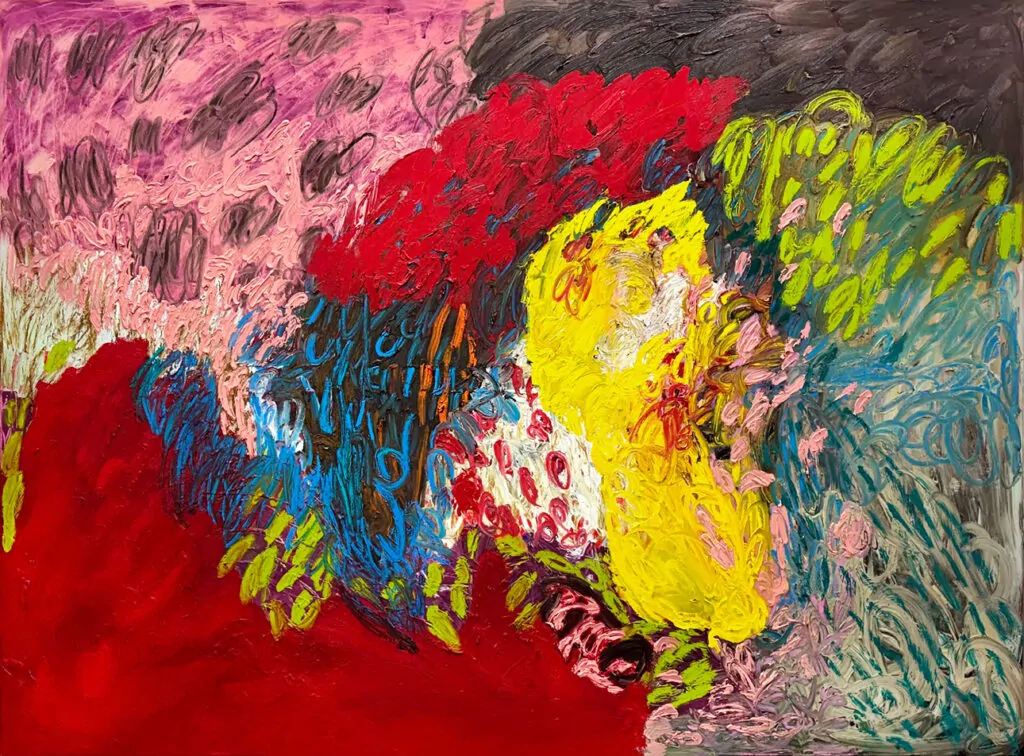
Oil on Wood Panel
(32cm x 21.5cm)
Courtesy of the artist and Bolanle Contemporary
You’ve described your work as a challenge to the invisibility imposed on Black bodies in Eurocentric spaces. When you’re exhibiting in major institutions or white-dominated scenes, how do you stay rooted in your intention?
Eilen Itzel Mena: For me, it’s about the work first. I create from a place that gives a lot of energy to the individual piece, and then to the environment I want to situate the work in. If the individual work is rooted in my intention and created from a place that is raw and unwavering, then I know it can stand on its own in any environment — especially one that is Eurocentric or white-dominated.
My work knows no fear. It knows what it is. I work hard for it to know itself — and for it to express that.
There’s a sense that your abstract pieces are coded—filled with marks and symbols that aren’t always meant to be ‘read’ literally. Who are those codes for? Are there elements you intentionally keep private, or sacred?
Eilen Itzel Mena: Painting, to me, is another form of handwriting — it is my personal (written) language. When I make abstract paintings, I create marks using brushes, palette knives, my fingers and hands, paper, cloth, and oil bars. I don’t like to limit myself, because this work is expressive and has a lot to say.
I tend to create a lot of spiralled lines, which for me signify the circular nature of time, while also referencing curled and coiled hair. There are elements that are meant to be kept private and sacred, but most are left for the viewer to decode — to find resonance in, whether that resonance is emotional, spiritual, physical, or intellectual.
What does it mean to you to take up space—visually, spiritually, politically—within predominantly white European art worlds?
Eilen Itzel Mena: It means freely being myself, for myself — because I hold that responsibility to myself.
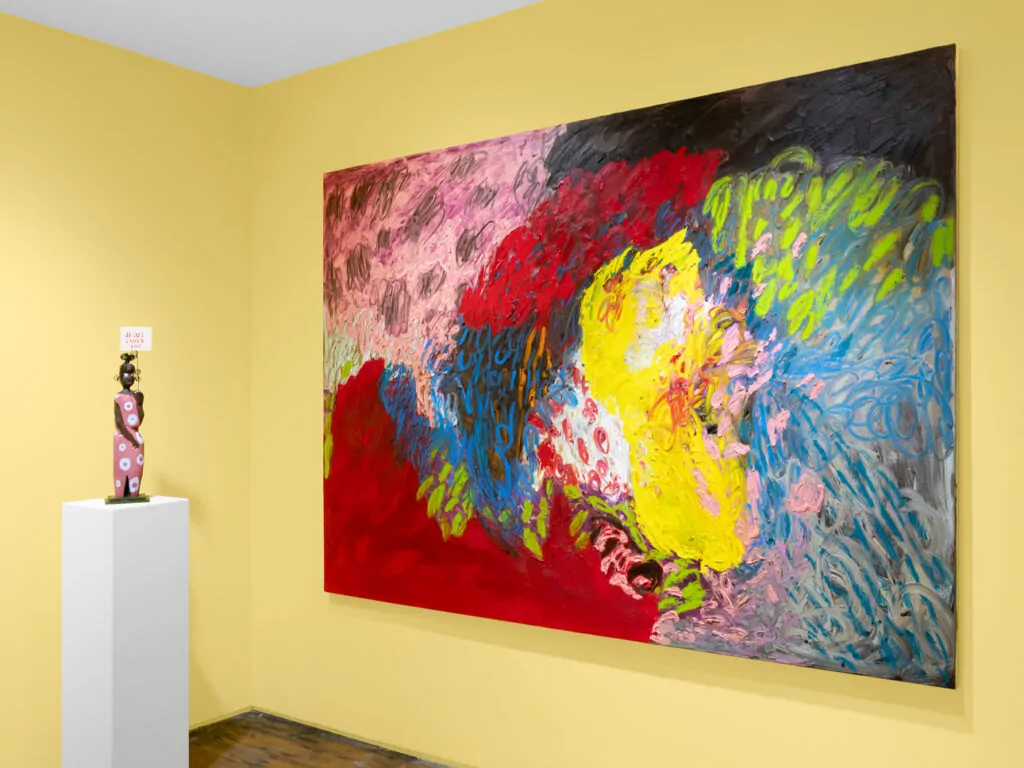
Courtesy of the artist and Bolanle Contemporary
Your current show, In Her Spirit, at Bolanle Contemporary—presented alongside Jemila Isa—feels like a cross-continental dialogue. What new ideas or connections did that collaboration spark? And what did you hope to communicate specifically to African and Afro-Diasporic audiences through this exhibition?
Eilen Itzel Mena: When Bolanle Tajudeen approached me for this exhibition and let me know about her conceptual vision for the pairing of our work I knew that I wanted to showcase abstract paintings alongside Jemila’s figurative works.
The exhibition explores the ways Black women hold, inherit, and transform spiritual legacies. My spiritual practice is Ifa, an ancient Yoruba practice. Because Ifa is an embodied practice that deals with aspects of the unseen and its makeup isn’t binary nor abrahamic I wanted to create abstract work to depict aspects of my relationship to spirit and the ways it has brought me joy and understanding of the world.
I leaned into creating works that felt expressive, full of movement and layered. This work was also rooted in my connection to Osun. I noticed that my relationship to femininity, beauty, care and love was something that was brought to my attention throughout this exhibition as she is the Orisa that deals with these themes. It is a relationship that is asking for me to transform it at this current stage of my life.
I hope that those who see our work in this exhibition leave with a complex understanding of what spirituality means from the gaze of two Black women from different parts of the diaspora. I hope that folks also leave with an example of how Jemila and I understand what spiritual exploration, autonomy and freedom mean within abrahamic and indigenous contexts as well as from a personal space in which the spirit decides what direction it wants to go in for itself.
You’ve shown internationally and won awards—but when you strip all that away, what does success actually look like for you? Is it about impact? Resonance? Who feels seen?
Eilen Itzel Mena: Success = Happiness = Comfort = True Authenticity
Success as an artist to me is when I feel a deep sense of comfort and stability. It means feeling grounded
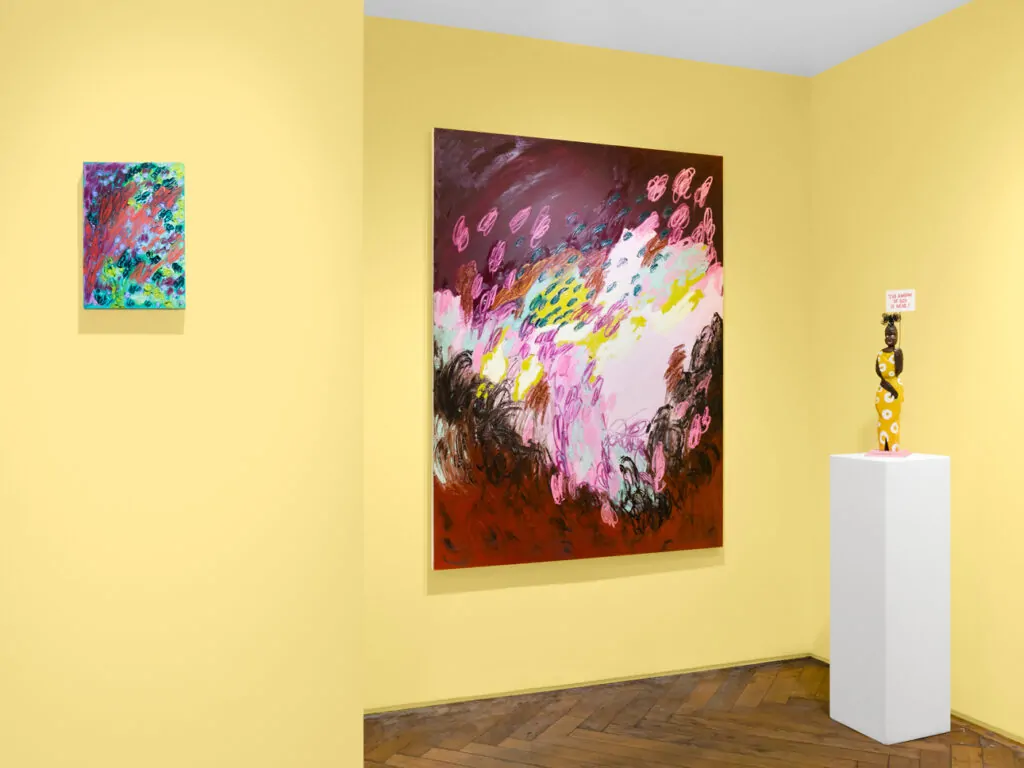
Courtesy of the artist and Bolanle Contemporary
If your paintings could speak for themselves, what do you think they’d say to the viewer? And why that message?
Eilen Itzel Mena: I would like my paintings to let the viewer know that they are seen, encouraged to be authentically themselves and confident in who they are and who they will become. This is important for me because I want the viewer to leave with a strong sense of self or with a push for them to feel strong within themselves.
Finally, how would you articulate your philosophy of art—not just as a practice, but as a way of living, perceiving, and being in the world?
Eilen Itzel Mena: Art to me is a way of living, perceiving and being in the world. I define artists as people who reimagine their observed or lived reality and create as a result of that [re]imagination art is what they create. Artists to me are interdimensional travelers. Their work is the souvenirs they bring back from those journeys.
©2025 Eilen Itzel Mena


